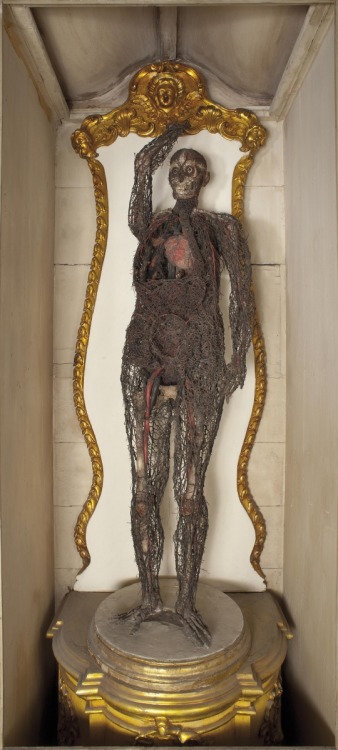#giuseppe salerno
The Anatomical Machines, Giuseppe Salerno, c. 1756-64
In the Underground Chamber of the Sansevero Chapel, housed in two glass cases, are the famous Anatomical Machines, or Anatomical Studies, i.e. the skeletons of a man and a woman in upright position with their arteriovenous system almost perfectly intact. The circulatory system depicted on the anatomical machines was artificially fabricated with waxes, an iron wire and silk fibers, probably following techniques commonly used by anatomists of that time
These disquieting objects were kept in a room in the palace of the Prince of Sansevero called “the Apartment of the Phoenix”, as a number of travellers and the Breve nota di quel che si vede in casa del principe di Sansevero, an anonymous eighteenth-century guide to the Palace and the Sansevero Chapel, attest. This source describes the Machines in detail, from the blood vessels of the head to those of the tongue and adds that at the feet of the woman was placed “the tiny body of a foetus”, alongside which there was even the open placenta, connected to the foetus by the umbilical cord. The two anatomical studies were moved to the Chapel, and in this way saved from destruction or loss, long after the death of the Prince. The remains of the foetus were still visible up to a few decades ago, when they were stolen.
Post link






